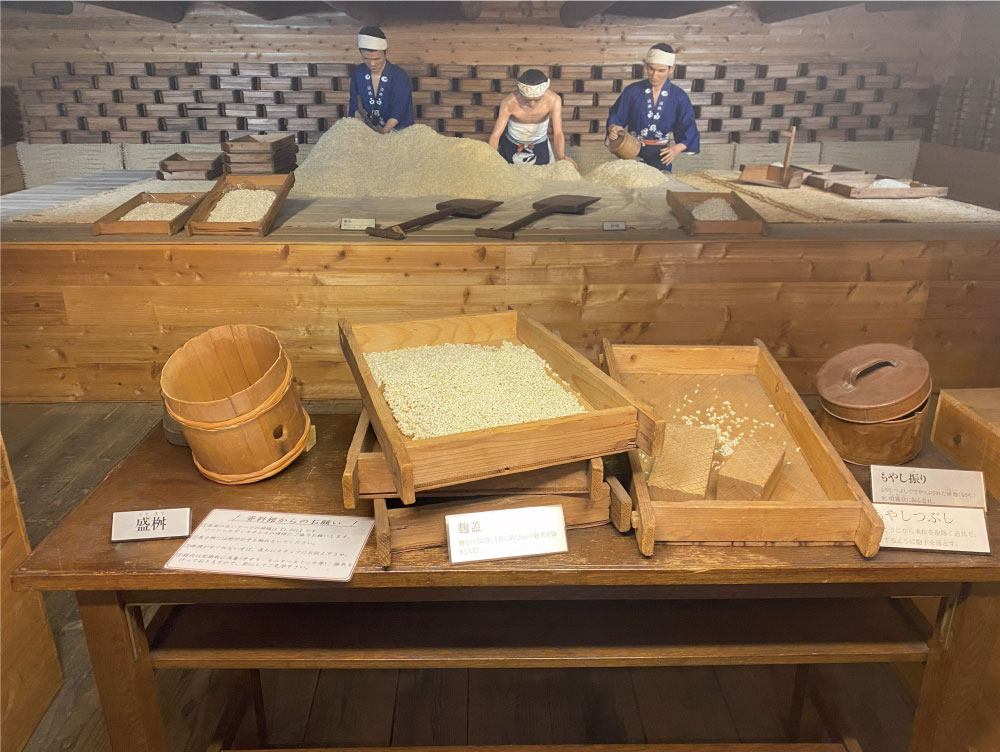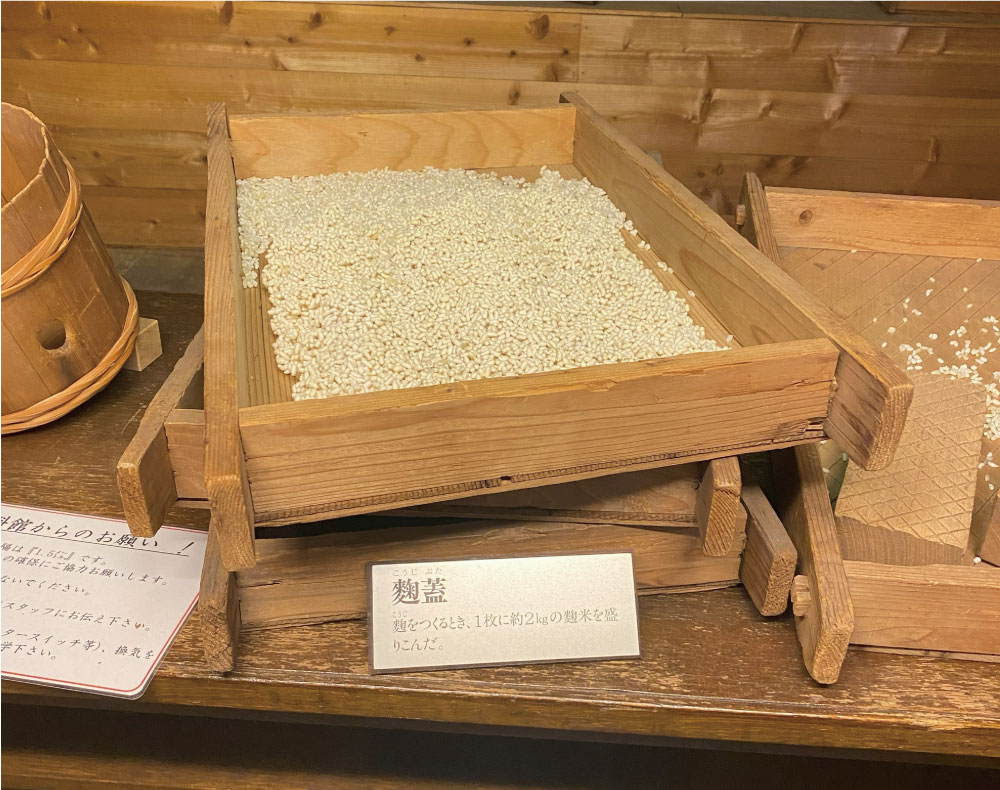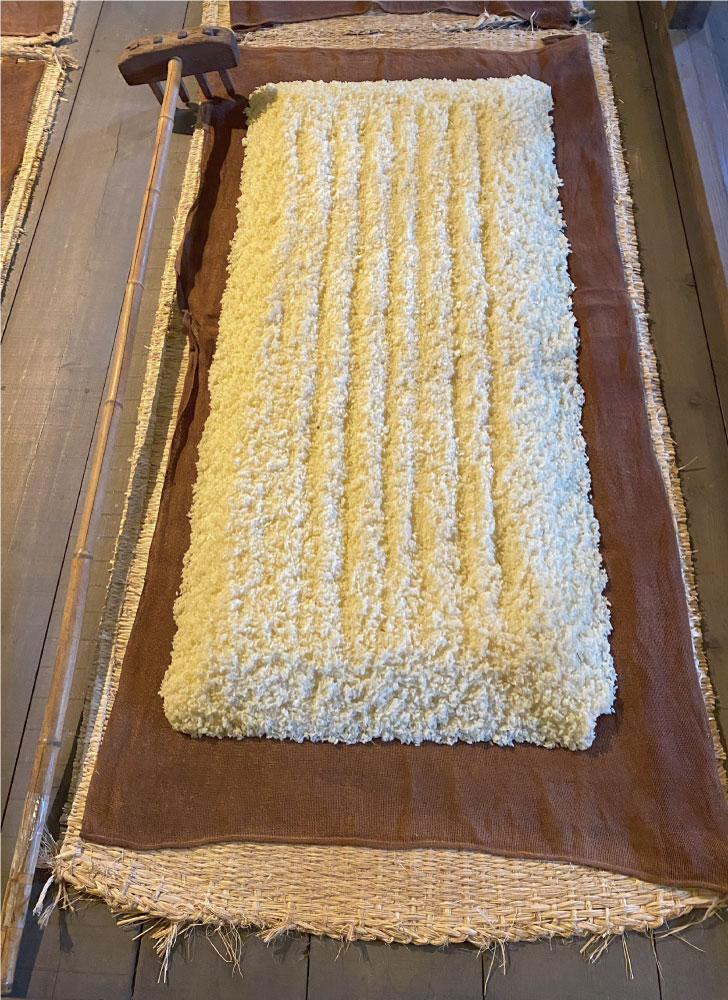Kojimuro (koji-making room)
Koji is made by seeding a part of the steamed rice with A. oryzae, a kind of mold.
The room for making koji is called the kojimuro, where high temperatures and humidity levels were maintained.
Making koji was a strenuous job as it required careful management of its condition every few hours over the course of two days, including throughout the night. This method is still used today for making koji to be used for ginjo sake.
Tools on Display
Structure of the Koji (Yeast) Room

A variety of measures have been taken to keep the room hot and humid. The space (approximately 75 cm) between the surrounding earthen walls and the interior of the room was insulated with straw or rice husks. The ceiling was made by stacking bales over 1 meter and then spreading mud over them. A skylight was built for ventilation, and a sliding door installed in the ceiling to control the inflow and outflow of air.
Toko-momi (Floor Kneading)
This refers to the work of spreading the steamed rice that's been seeded (sprinkled with yeast starter) on the floor of the room and kneading it well so that the yeast spores attach uniformly to the steamed rice.The steamed rice is moved to both ends of the floor while being kneaded, and afterward is piled up in the center of the floor.During this time, the temperature of the room and of the steamed rice is measured and made to reach around 30 degrees Celsius.
Mori (Dishing)
4 to 6 hours after turning, A. oryzae mold will begin to grow. When fungal filaments begin to show in spots, the rice is measured into 1.5-1.7 kg portions using a serving masu, and divided and dished into koji-buta trays. This process is called mori.The timing of the mori process greatly affects the hardening of the steamed rice and spreading of mold filaments.
Koji-buta (Mold Trays)

When growing koji mold, about 2 kg of koji rice is piled onto each tray.
Koji Cooling

The finished koji mold, which takes about two days to grow completely, is at a temperature of about 42 degrees Celsius, and so is spread out on straw mats to cool. The mold is taken out at 12:30 a.m., and spread and left on the mats until around 6 p.m. Soe-koji is taken out around 4 a.m. and spread and left on the mats until 11 p.m.Naka-koji and tome-koji are taken out around midnight; tome-koji is left spread out until around 7 a.m., and naka-koji is left spread out until around 3 a.m. the following morning.
